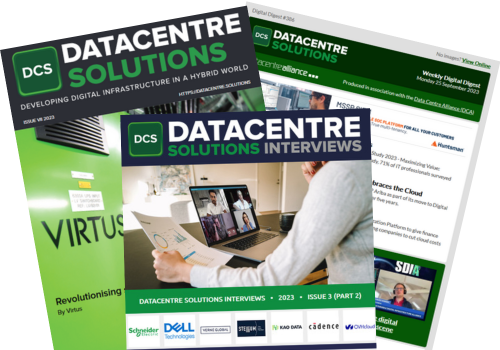Data centres have a pivotal role to play in the future of global economies, including in the UK where the government is enthusiastically encouraging investors to build more. However, whilst building more data centres will be vital to unlock the promises offered by the digital economy, to accommodate them the total capacity of the UK grid will need to increase.
Indeed, the UK grid is already straining at the seams to deliver the volume of energy that the UK requires, whilst simultaneously attempting to connect new renewable power sources to the grid. All of which is to say that whilst the government might welcome the construction of new data centres, those tasked with keeping the lights on across the UK might be more sanguine about the prospect – particularly as the energy demands of data centres are expected to skyrocket as the use of AI becomes more commonplace.
However, whilst this problem is growing, the solution to it is also emerging at a similar rate. Renewable energy assets are being built in increasing numbers and with greater capacity to generate energy. A single onshore wind turbine installed today, for instance, can now generate over 4MW of energy, more than twice that of turbines installed 5 years ago. These advances in renewable energy will be crucial for powering the data centres of the future.
Unlocking the benefits of the digital economy sustainably
Given that renewable energy will have the key role to play in decarbonising the UK electricity industry, the challenge is to ensure that data centres are clearly drawing energy from renewable sources. That process will happen organically in part as the share of renewable energy across the National Grid continues to grow. But with the grid battling connection delays as well as capacity limits, a wait-and-see approach won’t suffice.
Instead, it will be essential to build renewable energy assets alongside new data centres or to build new data centres close to where renewable assets are already located – in other words to use ‘behind-the-meter’ energy. This will enable data centres to be plugged directly into renewable assets, limiting their demands on the grid and – given the high energy costs that would otherwise be incurred by operating the data centre – offering significant financial benefits at the same time.
Examples of this can include using solar panels on the roof of a data centre or a wind turbine located in a nearby field. Amongst the advantages of behind-the-meter energy are predictability of cost and supply, both of which are particularly valuable for data centres (and indeed other energy intensive businesses) at a time of considerable fluctuation in the energy markets.
The costs of behind-the-meter energy are also lower than energy bought directly from the grid, meaning that the initial capex costs of installing renewable assets will effectively pay for itself in savings over time. Data centres will also have the option to sell excess energy to the grid and to take advantage of a range of tax credit schemes designed to encourage the installation of renewable energy. For data centre businesses that aren’t in a position to make the upfront investment to install renewable assets, there is also the possibility of working with companies that provide fully funded renewable installations.
These installations are backed by a Power Purchase Agreement (PPA), whereby the data centre agrees to purchase the energy generated by the on- or near-site assets at an agreed upon price for an agreed upon duration. PPAs are also an option for data centres that aren’t in position to install assets on or near-site. In this case, Corporate Power Purchase Agreements (CPPAs) see the data centre agree a long-term contract with an energy provider to purchase renewable energy generated at separate sites located elsewhere in the UK at a pre-agreed rate.
This offers numerous advantages, including guarantees on cost and supply stability as well as that the energy being purchased is generated by renewable sources. Indeed, innovative technologies now enable purchasers to track the amount of energy they are consuming to the outputs of renewable assets, providing transparent time-based energy matching.
Optimise, optimise, optimise
Although data centre operators have a range of different options to choose from when it comes to purchasing or generating energy, it is also essential that they make the most of that energy. In other words, it should be a key priority to make data centres run as efficiently and cost-effectively as possible.
An example of how data centre operators can go about this optimisation of operations is by accessing the data that will be provided through either a CPPA or behind-the-meter assets. This data can be used by power generation specialists to assess the optimal times for certain processes to be run. For those used to the historical principle that the cheapest time to run energy intensive processes is at night, the results may be surprising.
For data centres using large amounts of solar energy, rather than scheduling operations at night, it may be most cost-effective to shift these to the daytime when they are generating or sleeving maximum solar power. The possibility of negative energy prices on particularly windy or sunny days should also be taken into account by data centre operators when making energy purchase plans. Taking account of such factors is essential if data centres are to operate at optimum energy cost performance.
Every data centre will come to different decisions about the combination and nature of renewable energy sources that is right for its particular location, budget, and energy needs. This will require data centre operators to work with energy sector experts to map out these requirements and to assess the available options in order to draw up a bespoke plan. But given the potential savings on offer, the initial effort required to integrate renewable energy into operations should be amply rewarded for data centres – with such integration offering practical and financial benefits as well as ensuring that data centre operations are put on a sustainable footing.








